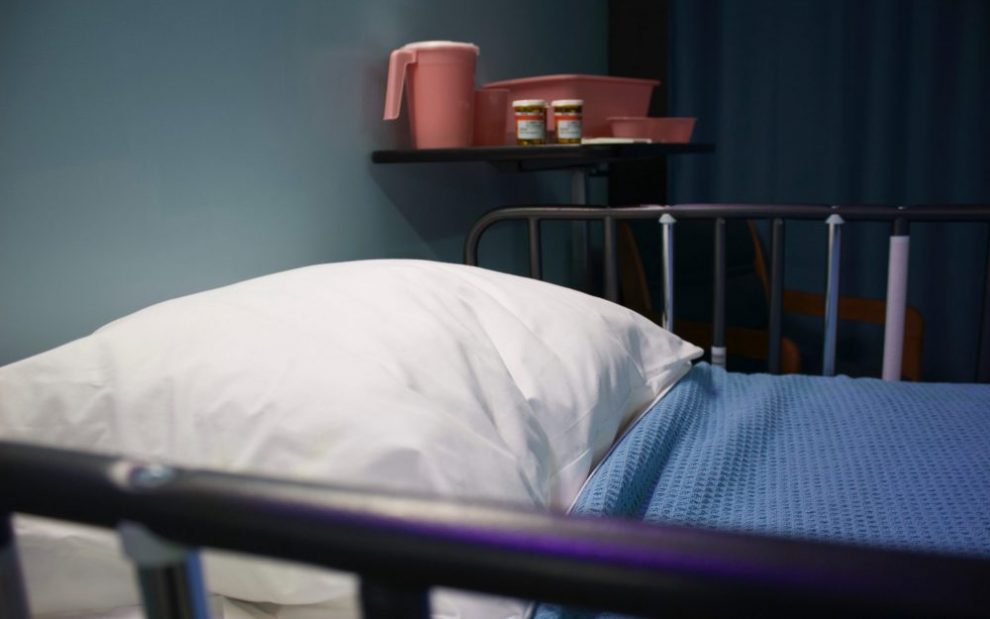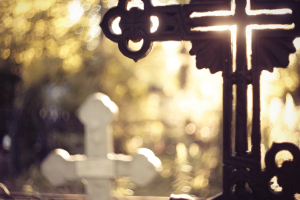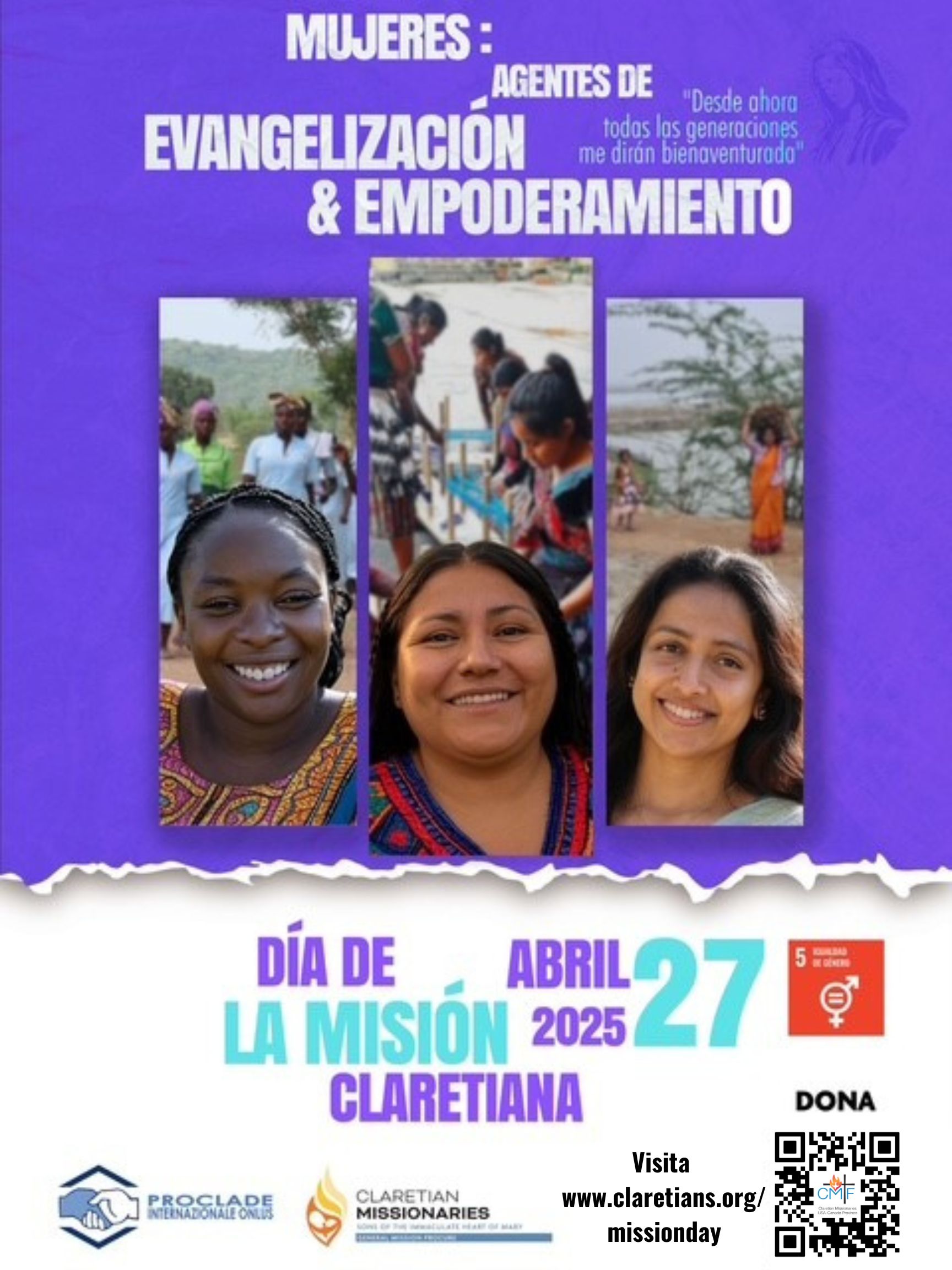In these latter years of the 20th century, matters related to “letting go” or not letting go have attained great prominence. The slogans can be as confusing as they are diverse: right to life; right to privacy; death with dignity; physician-assisted suicide; euthanasia; palliative care. Scarcely a week goes by without some development in the debate over what must be done or not done for the dying.
Often it’s been Dr. Jack Kevorkian who ratchets up the controversy a notch or two with some new challenge or death-dealing device. Perhaps some state is on the verge of passing a law to legalize physician-assisted death, while another prepares to criminalize such action. Maybe a federal court pronounces on the constitutional right to die in whatever way one chooses. Or there’s progress in the ongoing U.S. congressional effort to seize the license of any physician who prescribes a death-hastening substance. Maybe a right-to-life group is mounting yet another campaign to require that life be preserved if possible in every case, regardless of the patients’ wishes or the costs.
The net result of all this activity is a gnawing sense in the body politic that the nation’s profit-based medical care system is reeling out of control on some critical issues. At a very personal level that sense translates into a fear that in the final hours one will be left at the mercy of an overworked, morally confused, or just plain indifferent medical team. People wonder whether, on the one hand, they will be ushered into eternity long before they are prepared to go or whether, on the other hand, they will be kept painfully alive thanks to an impersonal, aggressive technology long after death should have come.
At many hospitals and medical centers today, efforts are underway to cut through the contradictions and ambiguities to help patients confront death with respect and reason. One of these is the Loyola Medical Center in suburban Maywood near Chicago where Cardinal Bernardin received treatment during his terminal illness. Increasingly, centers like these realize that unless a common ground is established involving medical science, medical ethics, and common sense, the 21st century may usher in the horrors of a Brave New World.
Sometimes, of course, the common ground is not all that elusive, especially when there’s a solid moral and religious tradition undergirding it. Last February 16 the family of Thomas Doheny let go of their husband and father at the Loyola Medical Center. Doheny’s wife, Kathleen, and his four children were joined around the bedside by his doctor, Jesuit Father Myles Sheehan, and his chaplain, Servite Father Tom Heskin. The ventilator, which had been keeping him breathing, was turned off, but Doheny, 62, did not seem to notice. He breathed on his own for about 45 minutes while Heskin in his soft Irish tenor led the group in prayer and a gentle refrain. “Into your hands we commend his spirit,” they sang. “For we must die to ourselves in loving you.”
As Doheny’s breaths grew less frequent, his son cradled him and told him he could go. Then Sheehan in a louder voice blessed the patient and assured him he was free to return to God.
At many hospitals and medical centers today, efforts are underway to cut through the contradictions and ambiguities to help patients confront death with respect and reason.
“And he died just like that,” said Kathleen Doheny later. “You know, he respected Myles and always followed his advice.” The curtains around the bed were then opened and an aggregation of grandchildren, in-laws, and other relatives came in to bid tearful farewells. “It was quite beautiful,” she remembers. “Myles said, `When it comes to dying, it doesn’t get any better than this.'”
The death of Thomas Doheny was remarkably peaceful because some significant details had been worked out beforehand. More than three years before his death, he had been diagnosed with serious emphysema of the lungs. He continued his work in the mail-order catalog business for a time, but his health steadily declined. He developed a heart condition, and in 1997, after undergoing a medical procedure called lung reduction to assist his diminished breathing ability, he suffered a slight stroke. Then early in 1998 he contracted pneumonia.
“It was just one thing after another,” says his wife. “He knew, we all knew, the time was short.” During his stays in the hospital he had been placed on a ventilator several times and found the experience terrifying. He asked to be heavily sedated when this was required, and, after discussions with Sheehan and Heskin, he requested that when his wife and doctor agreed recovery was no longer possible, he be removed from the ventilator and allowed to die. They agreed to abide by his wishes.
In the death of Thomas Doheny, some foundational beliefs of Catholic care for the dying were operating. First, explains Heskin, “we believe life is a fundamental, God-given good that we must respect and care for. However, life is not an absolute good; it is not an ultimate value. Therefore, there are limits to our duty to preserve it.”
Obviously, Heskin says, Doheny could have been kept on the ventilator indefinitely and remained technically alive, but that would have only drawn out his dying. The cause of death, he emphasizes, was not the absence of a ventilator but the emphysema-related inability of his lungs to furnish his body with oxygen. In addition, the substantial dosage of sedatives he was given may have further diminished his breathing to some extent, notes Heskin, but according to the time-honored principle of double effect, they were provided for palliative purposes-to moderate his suffering-not to cause or hasten death.
We have a 300-year tradition in the Catholic Church that excessively burdensome treatments are not necessary, that they can in fact interfere with the dying process.
Speaking of such cases, Father James Bresnahan, a Jesuit moral ethicist at Chicago’s Northwestern University Medical School, says, “We have a 300-year tradition in the Catholic Church that excessively burdensome treatments are not necessary, that they can in fact interfere with the dying process. We have to remember the First Commandment: ‘Thou shalt not have strange gods before thee.’ We use medicine and medical treatments, but our ultimate faith cannot be in them. Our faith is in God.”
Dr. Ellen Gaynor, the cancer specialist who treated Cardinal Bernardin at the Loyola Cancer Center (now the Cardinal Bernardin Cancer Center), said the difficulty in withdrawing artificial support is deciding when the patient “has reached the point of no return.”
In many advanced cases of lung or liver disease, she says, the decision is obvious, but with other illnesses there can be serious doubt, and the medical team must proceed cautiously.
Kathleen Doheny has no reservations today about the decisions she made in consultation with Heskin and Sheehan. “There was no way he was going to get better,” she says. So the death of her husband of 36 years was transformed into what she remembers as “a tight family experience-I don’t think you can get through this sort of thing without someone supporting you.”
Much harder is the letting go when decisions have to be made suddenly, with little time for reflection. Last May, Susanne Infelise, a 27-year-old teacher in a Catholic elementary school in a southwest Chicago suburb, was the picture of health. She had a personal trainer, did aerobics three times a week, and was careful about what she ate.
But Infelise developed a pesky kind of laryngitis and a dry cough that wouldn’t go away, so she went to the family doctor, who prescribed a chest X ray. It revealed frightening changes in her lungs, and Infelise was immediately admitted to a hospital for tests. During a biopsy of her lung, the lung collapsed. She was rushed by ambulance to the larger facilities at the Loyola Medical Center in Maywood. Perhaps, said the examining physicians, she had developed some raging sort of viral pneumonia. Within a few days the diagnosis was grimmer still. Infelise had pulmonary fibrosis, a condition in which the lungs become leatherlike, honeycombed with cysts. The cause is unknown.
At sacred moments like birth and death, “God is present in a special way—we stand on holy ground.”
Advertisement
Her struggle to breathe on her own became so painful that she was put into a drug-induced coma, placed on a ventilator, and given 100 percent oxygen. She remained in that state for a week, receiving drugs in an effort to stabilize her condition. Instead of rallying, she gradually failed; only the medical machinery kept her alive. So swift and unexpected was the onset of her illness that Infelise had neither expressed her own wishes, appointed an attorney for health care, or signed a living will. Decisions about her treatment therefore lay with her family-her parents, Ronald and Carol Infelise, and her two sisters, Michele and Kara.
Infelise’s doctor and Heskin, the chaplain, gathered them together and laid out the options: She could be removed from the artificial support; she could be left indefinitely on the ventilator; or she could be brought out of the coma and asked her own wishes in the matter. But in the third option, Infelise would be in such intolerable pain and absolute panic, advised the doctors, that a rational discussion would be virtually impossible.
“Your decision,” Heskin told the family, “must be made not just with a view to Susie’s biological life but with a consideration of the theological and spiritual perspective.” Along with her life, he said, “she was given a mission-to use her gifts and talents,” and she did in her various roles as daughter, student, and teacher. Now as her body fails, he said, it seems clear “that her mission is completed and the time has come to let her return to God.” Although the decision they had to make may seem the hardest they will ever have to face “and you may feel guilty later on,” Heskin told the family, “you’re actually not making the decision because it’s already been made.” The instruments preserving her life are futile, he said, “so the real decision now is to accept reality.”
Infelise’s mother, Carol, says they all prayed then amid tears and went home. Away from the hospital, “I could only think, I can’t let her go,” she says, “I just can’t. But when I went back the next day I knew what we had to do.”
Heskin explained that at sacred moments like birth and death, “God is present in a special way-we stand on holy ground.”
Just 12 days after Infelise consulted her doctor about her laryngitis, the ventilator was turned off. She passed away within an hour. “She didn’t suffer,” says her mother, “and the funeral was wonderful. The church was filled with her students, and there were five priests at the altar.”
In 1996 two federal appellate courts (in New York and the state of Washington) could find no difference between turning off a ventilator-as was done in both the Doheny and Infelise cases-and in administering lethal drugs to end lives. In disconnecting the ventilator, said the Washington court, “the doctor is unquestionably committing an act. He is taking an active part in bringing about a patient’s death. . . . To us what really matters is that the death of the patient is the intended result as surely in one case as the other.”
Catholic moral theology vehemently contradicts that assessment. As the National Conference of Catholic Bishops argued in their 1995 “Ethical and Religious Directives for Catholic Health Care Services,” in withdrawing artificial life supports, one is not killing a patient, only accepting “our human limitations to reverse the dying process.” In administering lethal drugs, the cause of death is not the disease but the drugs administered precisely to end life. Forgoing useless, extraordinary, or disproportionately burdensome treatment is not the same as euthanasia or assisted suicide, said the bishops.
In June 1997 the U.S. Supreme Court seemed to agree with the bishops when it rejected the reasoning of the Washington and New York appellate courts. In a unanimous opinion the nine justices declared there is indeed an intrinsic difference between physician-assisted death as “killing” and the practice of palliation as “letting die.” In addition, the high court accepted as valid the argument that a state might criminalize physician-assisted death because of its potential harm to individuals and society. Only four months later, however, this same Supreme Court, in October 1997, refused to review an Oregon law that clearly allows physician-assisted death in certain situations. As a result, considerable confusion reigns and individual state legislatures remain free to propose laws as they choose-for or against physician-assisted death.
After studying the opinions of the various justices in the June 1997 Supreme Court case, Bresnahan believes the court in the future may backtrack and take a more favorable view of physician-assisted death, especially if better palliative care and quality hospice services are not more readily available throughout the nation. Hence, he says, people involved in health care may have only a “brief window of opportunity” in which to improve care.
“It would have been very selfish of me to want him to linger,” Lorraine Rook says. “And do you know, his last words to me at 2 a.m. were `I love you, honey.'”
It should come as no surprise that widespread discussion of the right to die, combined with the fear of a prolonged, painful death, should make suicide a tempting alternative for even the most conscientious people. Such a person was Lawrence Rook, who at the age of 80 was diagnosed with a fast-growing recurrence of abdominal cancer in August 1997. The tumor was considered inoperable.
On the way home from the fateful medical exam, he said to Lorraine, his wife of 50 years, “Have we got Dr. Kevorkian’s phone number?” The question was a facetious one, his wife said later, but only because Lawrence Rook didn’t really need Dr. Kevorkian. A pharmacist and later a drug salesman during most of his working years, he knew far more than the average citizen about the practical aspects of suicide. He knew what to get and how to use it.
“I think a lot of people react as he did when they get the bad news,” Lorraine Rook says, “they just don’t say it out loud. But he was always a man who said exactly what he thought.” The temptation preyed on his mind for a long time, she acknowledges, and he struggled with it: “What he didn’t like was being so dependent as his strength failed,” his wife recalls. “He used to say, `I just can’t take this kind of life.'”
From September on, Lawrence Rook remained in a hospice situation at his home in Westchester, Illinois. Here he was visited regularly by a hospice team from the Loyola Medical Center-social worker, nurse, and chaplain. And gradually, with their assistance and the constant care of his wife, he came to accept what lay before him. “We talked about how richly blessed he had been,” says Lorraine, “about our family [three grown children, 13 grandchildren], about his love for me and his faith in God.”
The hospice chaplain, Kathleen Conway, a Sister of Charity of the Blessed Virgin Mary, consoled him, says Lorraine, telling him, “God isn’t ready for you yet, Larry.” As longtime members of the United Church of Christ, the Rooks shared with Catholics a strong belief in the sanctity of life and a sense that just as we participate in the life of Christ, we are each called to participate in his death.
By December, Rook was extremely weak and confined to bed. He was uncomfortable, says his wife, but not in excruciating pain or in need of heavy pain killers. “I can’t say enough about the hospice team,” says Lorraine. “They supported us all the way. Larry was at peace.” At night Lorraine slept in their old bed beside the hospital bed provided for her husband. She arose every two hours to see how he was doing and to make him comfortable. On December 19 she checked on him at 2 a.m. and they exchanged a few words. At 4 she found him dead.
“It would have been very selfish of me to want him to linger,” she says. “And do you know, his last words to me at 2 a.m. were `I love you, honey.'”
In the modern world, human autonomy-the freedom to control one’s destiny-appears to many as a kind of absolute and inviolable right, according to Bresnahan. Yet, he insists, this right is not an absolute since there always has to be “a measure of submission” to what cannot be controlled. Far from viewing death as a horror to be gotten over with as quickly as possible and by any means necessary, the Christian is challenged to see death-as Bernardin did-as a friend.
“Freely submitting to death can mean dying in Christ,” Bresnahan has written. “A Christian’s dying is . . . the final gift of God’s calling us to be conformed to Christ. Our dying is… accepted as the final gift of redemption.”
Conway, who assisted Lawrence Rook in his struggle, has been hospital chaplain and bereavement coordinator at Loyola for five years. She says she feels a sense of satisfaction, not loss, when someone achieves a kind of acceptance in the final days.
“It’s a real privilege to be involved in the most intimate part of people’s lives,” says Conway. If there’s a downside in this ministry, she adds, it’s the overwhelming amount of paperwork required by the government and insurance providers for virtually every contact with patients.
Conway says she feels a sense of satisfaction, not loss, when someone achieves a kind of acceptance in the final days.
Besides those tempted to seek a quick and fatal intervention in the face of approaching death, some reject any intervention whatsoever, even without a grave medical diagnosis. They create peculiar complications, largely for family and professional care providers.
One day in early 1996, Anastasia Florek, an 89-year-old widow from Chicago’s far Southeast Side, announced she would be “going to heaven” soon. “How do you know?” asked her eldest granddaughter, Annette Tepavcevich, with whom she lived.
“Because I’m dying,” said Florek, a tiny, 4-foot-10-inch woman of Polish extraction and strong Catholic faith.
“But Buscia [Polish for Grandma], how do you know you’re dying?”
“Because I’m not hungry.”
“Then you should eat anyhow.”
“I can’t eat because I’m not hungry. Besides, I’m going to die.”
Tepavcevich passed off the exchange as a phase on the part of the old woman. But her grandmother remained adamant. She would not eat, except to nibble on a bit of food once in a while. Tepavcevich and her husband tried to persuade her to see her family doctor. Florek had undergone a successful gall bladder operation many months before and had not complained since of anything but occasional back pain. As her weight steadily declined, her family-four children and 12 grandchildren-grew alarmed. So did the doctor. Florek should come in for tests, he said, possibly have a feeding tube inserted.
“I’m not going anywhere,” said Florek, “and I’m certainly not having some gadget stuck in me.”
Tepavcevich, who had the power of attorney for health care, says she was “tormented” by the situation. She and the family wondered if Buscia should be declared incompetent in order to have her forcibly diagnosed and forcibly nourished. After all, wasn’t she committing suicide? Wouldn’t she have a horrible death due to starvation?
“I don’t want to be mean,” said Florek, “but put a gadget in me and I’ll rip it out. I’m dying; it’s God’s will.”
Some of the hardest end-of- life decisions have nothing to do with ordinary and extraordinary medical distinctions.
In every other respect, the family agreed, she was her old self-alert and independent, no hallucinations, no dementia or senility. So they got in touch with a new doctor who advised that there was really nothing to do but abide by the woman’s wishes. He provided an accepted but essentially meaningless diagnosis-failure to thrive-and recommended the hospice program at Loyola. For the next few months she was visited regularly by the nurse and other hospice team members. No one tried to make her eat, and there were no references to artificial “gadgets.” At 89, Buscia was listening to her body and responding to what it said, the chaplain told Tepavcevich; the chronic absence of hunger indicated the presence of a serious, likely terminal malady. The family had no obligation, he said, to compel her to use means she found abhorrent to preserve her earthly life for a short period. Florek was clearly looking forward to the life to come.
In her final weeks, some five months after she had announced her impending demise, Florek had trouble sleeping at night, so she was given a mild tranquilizer, which she took without comment or complaint. She was not bedridden but was steadily growing weaker. On June 10 her parish priest gave her the Anointing of the Sick. He had scarcely left the house when Anastasia Florek passed away. “That’s how Buscia was,” says Tepavcevich. “She always did things her way.”
More than 400 years ago, the Spanish Dominican theologian Francisco di Vittoria wrote, “If a sick person can take food or nourishment with a certain hope of life, he is required to take food. However, if . . . there is present grave consternation in the appetitive power so that only with the greatest effort as though through torture can the sick person take food, this is to be reckoned as an impossibility and therefore he is excused.”
The principles behind di Vittoria’s advice still operate in Catholic theology today: First, although a moral obligation to prolong life is generally present, it does not hold in all situations; second, a means to prolong life need not be used if its effect is doubtful or places a grave burden on a patient-whether that burden is physical, psychological, or even economic.
Much discussed over the centuries is the distinction between “ordinary” means, which a person is required to use, and “extraordinary” means, which are morally optional. Those terms are somewhat confusing, notes Dominican theologian Kevin O’Rourke in his book, Medical Ethics: Common Ground for Understanding (Catholic Health Association, 1998). “Ordinary,” he says, can suggest “natural” means or it can be interpreted as “readily available” means or even “standard and accepted in the medical profession.” “Extraordinary,” on the other hand, can signify “artificial means” or “difficult to obtain” means or even “innovative and experimental.”
Rather than compiling a list of what are objectively ordinary and extraordinary means, writes O’Rourke, theologians now outline “general actions that people in normal circumstances would avoid or perform to prolong life. But in regard to specific actions that might or might not be judged ineffective or too burdensome, they call on individuals to decide for themselves. Even eating food would not necessarily be a morally obligatory means of prolonging life. . . . If, in some circumstances, eating food is morally optional, how much more so might contemporary means to prolong life-ventilators, antibiotics, blood transfusions, and artificial nutrition and hydration-be judged optional if a sick person determines that the use of such procedures would be doubtfully effective or involve a great burden?”
For her, the final letting go has been preceded by a series of profound resignations.
It would appear then that Florek, without having read the distinctions of di Vittoria or O’Rourke, was operating well within the tradition of Catholic moral theology. Dr. Gaynor, who besides being a cancer specialist is a Sinsinawa Dominican sister and a professor at the Loyola Center’s medical school, says attitudes like Florek’s are quite uncommon in our death-denying society. They tend to be found, she says, “in people of great faith who view death as a necessary step to something better.”
Perhaps, says O’Rourke, “a more adequate and contemporary explanation of `ordinary’ means . . . would be: those which are obligatory because they enable a person to strive for the spiritual purpose of life without grave burden; ‘extraordinary means would seem to be those which are optional because they are ineffective or a grave burden in helping a person strive for the spiritual purpose of life.” He hastens to add that the “spiritual goal of life” may be understood in very broad terms-as “serving God and neighbor” or “leading a good life” or “relating to others” or “contributing to society.”
Some of the hardest end-of- life decisions have nothing to do with ordinary and extraordinary medical distinctions. Rather, they relate to more profound problems of letting go-unpacking the spiritual or psychological baggage that has been in storage for years, sometimes even from childhood.
The name and some circumstances in the case of Marilyn Hanley have been altered to protect her confidentiality. She was admitted to a hospital in the Rockford, Illinois area earlier this year with a form of lung cancer that had metastasized to her spine. Her suffering, observed her doctors, seemed to have a source deeper than the physical, and they asked the chaplain at the hospital to intervene. In a series of discussions with the chaplain, a woman, Hanley related a woeful tale, ranging from a violence-filled childhood in a broken home to her present, apparently terminal condition.
She was now, at the age of 72, divorced, long rejected by her two sons, and no longer on speaking terms with her three brothers. Some 30 years before, she had fallen away from the Catholic Church and feared she was destined for eternal rejection as well as the many earthly ones she had faced. Yet during her essentially loveless marriage, Hanley had experienced a brief but vivid love affair, the memory of which she neither could nor wished to erase. That momentary alliance, she contended, gave her a glimpse of something beautiful and enabled her to survive to this point.
The chaplain listened, assuring her that God understood her better than she understood herself: Hanley need be sorry for her infidelity only to the extent that it broke her marriage vow and offended God; if some other long-term benefits came from that experience, so be it. “God writes straight with crooked lines,” said the chaplain. Hanley could confess, receive absolution, and return to the church. She refused. Men had played so large a role in her unhappy life that she found it impossible to seek reunion with God through a man.
The conversations between the two continued throughout Hanley’s hospital stay and resumed when she returned for chemotherapy treatments. As Hanley revealed more and more of her griefs and disappointments to the chaplain, she found a measure of spiritual healing, even though her physical condition was floundering. She was able for the first time to sincerely forgive those who made her life miserable. Although she would not retreat from her unwillingness to confess sacramentally to a male, she began to believe she too was forgiven.
The chaplain did not badger her. “God has ways to forgive,” she said later, “even when sacramental means are physically or otherwise unavailable. You deal the best you can with the reality that’s there.”
Hanley knows she is going to die but is far less apprehensive than she was months before, in the chaplain’s view. For her, the final letting go has been preceded by a series of profound resignations.
Asked to comment on this case, Loyola’s Kathleen Conway says it is far from uncommon. Especially in hospice, she says, “we find people who experience a real difficulty in dying, people who hold on and on because they cannot die in peace.” Many of the complications resulting from extended terminal illness would be lessened, she says, if all the members of the medical team realized they are treating a complex person, not just one specialized aspect of the individual.
“People of faith who believe death is a transition from this life to life eternal should see it as a friend.”
At the Loyola Medical Center, there is a sustained effort to ensure that care is coordinated and “everyone is on the same page,” says Maureen Fuechtmann, director of ministry at the center. During their four years in medical school, students are now introduced to a Spirituality and Suffering curriculum, which includes a chaplain-student mentoring program in the first year, a course on doctors and prayer, required visits to nursing homes, and a later chaplain-partner experience where the young doctors are sensitized in specific areas like how to deliver the “bad news” to a patient or family.
Father Heskin, who has been at Loyola for 12 years and is a member of the center’s medical-ethics committee, says he has seen “tremendous change in medical culture-not just here but at a lot of places, we’re more tuned into the spiritual dimension; we’re better at getting to the heart of what life and reality are all about. And that eases the whole dying process.”
Dr. Gaynor concurs. Once, she says, cancer care was viewed as a “cold and hard profession,” but today specialists in that area are subjecting themselves to heavy self-criticism, attempting to provide better-quality pain management, serving as members of teams that include psychologists, pastoral-care personnel, and other specialists.
As this approach becomes more widespread, it could greatly alleviate the culture of fear that surrounds death in our society. In the book he finished just before he died, The Gift of Peace (Loyola University Press, 1997), Cardinal Bernardin told how a visit from Father Henri Nouwen helped him renew his belief in death as a friend.
“If you have fear and anxiety and you talk to a friend, then those fears and anxieties are minimized and could even disappear,” Nouwen told the cardinal. “People of faith who believe death is a transition from this life to life eternal should see it as a friend.”
Said Bernardin, “I needed to be reminded at that moment because I was rather exhausted by the radiation treatment.”
When members of the medical profession become sensitive to these important spiritual dimensions of dying, then letting go can become a reasonable, even welcome, choice for all concerned.
How to be prepared
Medical authorities recommend that everyone follow one of two legal measures while still in good health to direct whether they accept or refuse medical care should they become incapable of making the decision themselves. The two legal instruments available are: (1) the power of attorney and (2) a living will.
A power of attorney for health care, which supersedes the living will, is an authorization for a designated person to make all health-care decisions for the patient, subject to any specific directions determined by the individual.
A living will is a “declaration,” or directive, that in the event of an incurable and irreversible condition, death-delaying procedures will not be used or will be withdrawn if these procedures would only postpone the patient’s death. This direction is to the attending physician, who is responsible for determining the patient’s condition.
A gray area exists in living wills, however, as to the withdrawal of food and water, depending on whether death would be caused by cessation of sustenance or by the terminal condition. Yet a power of attorney may authorize the agent to have food and water withdrawn.
Still, an individual should consider executing a living will in addition to a health-care power of attorney in case the agent cannot or will not act, or if for some reason the power of attorney is not accepted.
The forms for a living will and power of attorney for health care differ from state to state; in most cases they are relatively simple. In the living-will form provided by the Illinois State Medical Society, the signer declares in part, “If at any time I should have an incurable and irreversible injury, disease, or illness judged to be a terminal condition by my attending physician who has… determined that my death is imminent except for death-delaying procedures, I direct that such procedures which would only prolong the dying process be withheld or withdrawn, and that I be permitted to die naturally with only the administration of medication, sustenance, or the performance of any medical procedure deemed necessary by my attending physician to provide me with comfort care.”
In the somewhat more complex Illinois form for power of attorney for health care, the signer says, “I hereby appoint . . . as my attorney-in-fact (my `agent’) to act for me and in my name… to make any and all decisions for me concerning my personal care, medical treatment, hospitalization, and health care and to require, withhold, or withdraw any type of medical treatment or procedure, even though my death may ensue.”
The signer can indicate which of three general options the agent should follow:
- “I do not want my life prolonged nor do I want life-sustaining treatment to be provided or continued if my agent believes the burdens of the treatment outweigh the expected results.
- “I want my life to be prolonged and I want life-sustaining treatment to be provided or continued unless I am in a coma that my attending physician believes to be irreversible.
- “I want my life to be prolonged to the greatest extent possible without regard to my condition, the chances I have for recovery, or the cost of the procedures.”
Whatever the form, these advance directives allow the signer to add additional personal stipulations about medical treatment.
Although combining legalese with end-of-life decisions might seem somewhat harsh, Jesuit Father James Bresnahan, a moral ethicist at Chicago’s Northwestern University Medical School, sees a spiritual dimension to the process.
Such documents, says Bresnahan, are ways of expressing the “prayerful discernment” we have made about inevitable death. In an often-cited 1991 America magazine article, Bresnahan explains that personal reflection on Christ’s dying “should shape decision making about my own dying. What burdens do I find excessive for me, beyond bounds, or only acceptable if God gives special inspiration for that? How do I wish to avoid rashness and presumption should I become unable to express myself to caregivers? What burdens do I refuse to see imposed on those whom I love?” So viewed, he says, these legal-sounding advance directives can actually become “personal spiritual testaments.”
Image: Unsplash














Add comment